#prince of bohemia
Explore tagged Tumblr posts
Text
No one but me cares, but I have been sitting on this licherally since the premiere of season 2:
I have decided that Ricky being "a minor prince" means that he's half German (meaning his full name is much more likely some variant of Friedrich/Frederick than Richard), and that he inherited his status from his mother. I'm not a historian but here's my understanding and rationale.
With British and (therefore by extension, French) royalty, a prince who wasn't the heir (or spare even) was more likely to be referred to based on where they were born or referred to by one of their landed titles (which is why "John Lackland" was such a good burn). For example, in the Wars of the Roses, relevant people at all levels of the aristocracy are discussed as being Yorkist or Lancastrian, specifically because of ties to those respective dukedoms (titles held by the respective sons of Edward III, who they were descendants of).
In the Holy Roman Empire, however, there were LOADS of "princes" who were once called that because the only ruler above them was the Emperor. Because of this status, rulers with many different titles and amounts of real power could be considered princes and given "princely" airs. Among the princes were dukes, grand dukes, counts palatine, prince-abbots, princess-abbesses, and at different times a handful of kings (ie Bohemia, Hungary) and other titles besides. Some of the princes were Electors, who had extra privileges and duties within the Empire, but no one would have called the Electors "minor" anything.
(Gods help you if you need to keep all the titles straight but blame it on geography and religion.)

For Ricky to be a minor prince (minor enough to make that distinction) he most likely would have ties to one of the smaller or less prominent states. He would technically still be allowed to grant himself princely airs if, say, his family were part of the Imperial Diet but as counts or something. But there were princes and there were Princes.
During his conversation with Zheng, Ricky mentions something about his father having connections to the British treasury, which is the kind of power that the English aristocracy pretty famously had strong feelings about the royal family not having direct access to. So in this case, I've decided that as much as Ricky is any kind of prince, his father was at best literally any British noble. That would mean he had the title of prince based on his mother's status, which wasn't impossible because women could hold certain titles in the Empire in their own right, or could be a "princess" based on their family's status.
To be clear, this is interesting to me because a) if the 'tism hits hard anywhere it's history and b) this makes Ricky clinging to his status as a "minor prince" extra pathetic imo. Among the brits his status as a minor (German) prince would only sort of matter, especially when he clearly didn't hold that status directly as a ruler of any kind (otherwise ties to the British navy would be extremely sus!). At best it's a courtesy title he might technically be entitled to based on a real title held by his mother, but it just as easily could be a half-German brit making way too much of a title his grandfather held (and that he would have no direct claims to unless maybe there was like, no one else). It doesn't matter in the grand (or not so grand) scheme of things, but it certainly is funnier.
*side note: this is one reason why the children of some imperial rulers in central Europe, eastern Europe, and Russia were called grand dukes and grand duchesses instead of princes and princesses, the latter of which would have been lower on the aristocratic ladder than the former.
#i know this is the show where history only matters until something funnier comes along#but this is my headcanon#and hopefully nobody makes it weird that I made this post#can we please be normal about what is basically still a shitpost despite appearances?#please and thank you#ofmd#headcanon#prince ricky#our flag means death#the david jenkins school of history
66 notes
·
View notes
Text
It's the Smashwords annual sale, and thousands of eBooks are discounted, with many of mine FREE!
You can browse all of my books on Smashwords here, and delightfully with Smashwords, you can even eBooks as gifts as well as having them for yourself!
25% off
Heart of Stone - Novel. Agonisingly slowburn historical fantasy romance between an ADHD vampire and his autistic secretary. Gentle humour and lots of conversation.
Powder and Feathers - Long novel. Found family & fucked up romance between a BPD transmasc Fallen Angel and the depressed artist he begins stalking in the park. Les Mis inspired, horny and violent.
Gerald Poole and the Pirates - Novella. MM and MMM romance. ADHD gentleman and exhausted autistic naval lieutenant are kidnapped by a devilishly sexy pirate and his crew in the 18th century Mediterranean.
Divine Service - Novella. Pre-romance, with Jeeves and Wooster flavouring. A young man coming into himself as a servant in a big house is pulled to a higher destiny by his divine father; meanwhile, a clumsy and abashed young man attempts to escape his family's plans for him.
FREE
Very Well - Romance in Ancient Greece. A herbalist is dispatched for his role in an arranged marriage of sorts with a priest of Aristaeus far from home. With time – and effort – the two of them come to an understanding.
A Man's Indentures - Fantasy/romance short. A man indentured is dispatched to an island to be a bailiff's bodyguard. 13.5k, M/M. A man indentured for his parents' debts is dispatched to a magic-poor island to serve as bodyguard to the local bailiff — an imperfectly beautiful man who has indentures of his own.
A Gift for the Wolfmen - A young man in a brothel is invited to join a quartet of hulking wolf-like warriors. 6.4k, rated E. Two trans men, both being gangbanged and cumflated by four huge cis wolfmen.
Sun-Kissed and Lightning-Touched - A mercenary and a messenger travel together to an isolated mountain shrine. 9k, rated E, cis M/M. Euclides, a mercenary, accompanies the haughty messenger Iridoros to an isolated shrine on the top of a mountain.
Hitting the Books - A young man (age 24) returns to his old school to teach and attempts to pursue his old history teacher. Rated M, 12.6k, cis M/M.
Steps Ahead - A serving boy seduces a prince who is tired of the weight of his crown. Rated M. 13.7k. M/M fantasy, with dark comedy throughout, and a rather fraught romance. Prince Alexander, who hates the weight of his crown, his kingdom, and his princely identity, tries at every opportunity to escape his position, but is foiled at every turn.
Sleeping Beauty - A sailor takes something that doesn't belong to him, and the captain punishes him for it. 9.2k, cis M/trans M and cis M/M. A carpenter's apprentice can't resist the captain's cabin boy while he's meant to be performing maintenance, and afterwards, the captain and the cabin boy punish him between them.
Workplace Connections - A junior secretary makes a friend at work, and some more besides. 10k, rated M, F/F. A young woman makes friends with one of the only male secretaries in her workplace. 1960s Manhattan, featuring lavender marriages, period queerness, autism, misogyny, cats, etc.
Room for Dessert - An office worker is taken out for dinner by his new, hot boss. 5.8k, rated E, M/M. Boss/employee, age difference, power dynamics, food kink, stuffing, kissing, some mild masochism.
For Want of Time - A delivery man is quite infatuated with the clerk at a magical toy shop. Sweet and loving M/M romance developing bit by bit here. Rated T, 6k, with teasing and flirtation throughout. CW for loss of a parent and grief.
The Many Deaths of Baldr the Undying - One of Odin's record-keepers interviews the god Loki on the subject of the god Baldr – his life, his death, and what came after. 13.6k, rated M for violence, featuring some Loki and Baldr, some Odin scheming off-screen.
The Devil's Mark - In medieval Bohemia, a young man trails after the executioner after the hanging of his father. Eventually taking pity on him, the executioner invites him inside. 11k, rated E, M/M. Some age difference, intimacy, oral, first-time topping, and masturbation, but the E rating here is as much here for heavy themes.
Agony and Ecstasy - An abbot takes a stranded sailor on for… personal duties. 6k, M/M, rated E! Age difference, virginity kink, some naivety, some oral and anal, first time enthusiasm.
Gellert's New Job - Gellert has worked as a business manager for the King family for nearly a decade when an error in judgement brings his employment to an abrupt end. Lucien Pike, a rival kingpin, employs his services instead. Fantasy, crime, and a good bit of dark humour. 21k. Rated M. Transgender, autistic man's POV; both protagonists are autistic.
Touch-Starved - When a man finds out about his disabled coworker's active sex life, he's very jealous, and maybe… something else, too. Rated E, cis M/ cis M, 15k! Arden Rice has been friends with Sebastian April for years, and it's never occurred to him before now that April might have an active sex life — let alone a sex life he want to involve himself in.
... and a good few other stories besides!
65 notes
·
View notes
Text
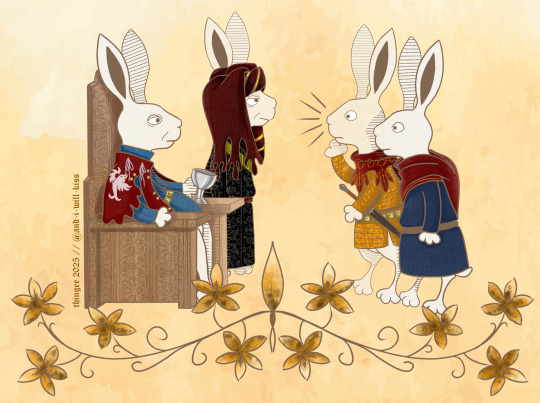
This room, dark and uninviting, surrounded by candles and the smell of a freshly started fireplace, only give me the creeps. It's like a crypt or an early burial, I feel trapped but I can't show it - Sir Hans, hand on the pommel of his newly acquired longsword, is determined to get our missive delivered. Now it's not the time or place to be this fearful.
The high politics go over my head, but I have learned along the way: the two kings, the Lords of Bohemia, Sigismund's army, the bandits, the unbalance of power. The discussion looks and feels neutral, as negotiations should be, but I can't help but feel uneasy, so I just follow along what Hans Capon brings to the table. My liege is fully invested on it, I'm impressed, who would believe the loose bird from Rattay who checks in every early morning in the Rattay green pub would be this... elocuent. We both agree to join Von Bergrow's retinue in the chase of the scourge of the region, the bandits. The Lord of Trosky says every hand that can hold a weapon is needed, his soldiers being split between His Liege's army has been in detriment of his own territory, so they must act. With that condition we agree, we will give our help in exchange of negotiations with the Lords of Sasau.
We are done finally, or so I think. Finally dismissed from our meeting with the wounded Lord, and wearing proper clothing this time (which actually makes me feel like a squire for once), I'm free to roam, but not leave in any instance, Trosky castle. I'll make sure I'll walk at a leisurely pace this time, no need to run fearing for the neck of my liege. I mean, friend. Hans has regained his composure and looks just like he was on the saddle of Caballus on the way here, even before the ambush that almost ended our lives. But his temper is never gone, as I hear him chewing, no, mauling the castle's Chamberlain for his lack of... understanding. I don't interrupt, I refuse to do that, even if Hans is going beyond a reprimand this time. Destroy him, my friend, you need this; but deep inside I wish he wasn't like this, but on the other hand, no one would like to end up with a noose around their necks.
The Chamberlain scampered out of the chamber's portal and Hans finally relaxes, huffing audibly. I finally join him in the room, where we only exchange glances. My Lord hushedly expresses a need for fresh air, so I follow him outside. We reach the battlements overpasses that crown the inner bailey of the castle, were Hans leans on the railing and relaxes - while he sounds tired and slightly dark, he's Hans alright. His normal edge is back and I can feel that. He doesn't look like a pauper prince anymore, finally wearing something more recognizable to me, as he picked a too familiar, obnoxious golden purpoint, maybe a bit too out of place for a wartime meeting and then he decided to embellish it with a similarly bright gold and red cowl. At least I can walk around without losing sight of him.
Since both of us are locked in here, there's nothing I can do but stretch my limbs for a bit. I must say, Trosky is even more impressive from the inside! I still can't believe how tall both towers are! Two earthen fingers pointing to the golden blue this noon gave us. Even more impressive is the liveliness of the workers, there's so many of them, always moving, always busy bees. It's no town populace, but they are so active that could double any town in the immediate vicinity. Suddenly I'm caught up with all the happenings, I learn Thomas is on the mend and his sister is beyond relieved, that there's two kitchens and I should stop at both of them, particularly at Bertha's. She promised me some soup and freshly baked bread and I can't say no to a proper meal for once. While I'm finally breaking said bread, oh the steam coming out of it was fantastic, and passing it on the remainders of that sumptuous ox tail soup, Bertha goes around with this story about demons. Demons? Like, here in the castle? My mouth is filled with soup-soaked bread, so I can't verbalize more than a couple hums, but she seems so invested in it so I let her finish her tale. Then she tells me the Chamberlain, the man with more experience in the castle, he has lived most of his life here, could tell me more. Now she got my attention, seeing the Chamberlain believes more in demons than the word of a Lord, so I bow out (Bertha feels like a million Groschen after this) and go straight were I can find him.
The Chamberlain is deep on discussion with some of the servants of the castle. A banquet is being prepared to celebrate the campaign against the bandits. Lord Von Bergrow thinks it's the best way to rouse the Lords and Ladies of the land, a simple display of his power well anointed with expensive wine. Once the servant ladies disperse, I approach him. Maybe my face is easy to read (I have to work on that), but the Chamberlain quickly has my interest. The demons, he says, have been long time tenants and they need to be purged at times. And he's very pressed about the banquet and things going right this time, particularly after his impasse with Lord Capon, so he enlists me in this purge.
I make my rounds in the castle, and the servants sure have tales of underworld creatures incurring in tormenting guests, rousing from the firepits and other demon-ly mischief. Both cooks have different methods to put these creatures down, recipes to the same objective and who am I to argue with them, so I just mix both ideas up and just drench the firepits at midnight with the holy water mixture the Chamberlain provided for this task. Some other people, namely the cursed blacksmith, have other ideas for their demons, maybe the vapours emanating from the outhouses fed his imagination well and we end up having a punch-out on the smithy because he made a fool out of me. Hope he enjoys eating gravel, I'm sick of this demon nonsense. My cheek hurts, my head craves a soft pillow and Lord Capon requires my presence.
Sir Hans recounts his plan for the following events, the banquet and the next morning strike at Nebakov, place where the vipers are nesting. He requires of me to behave, to not touch a drop of liquor and prepare his kit. I try to make some space in my head by telling him about the demons that drift nightly in Trosky. He goes pale. Demons! I repeat. He twitches. I think he doesn't believe me, so I go for a third time. He begs me to stop, please Henry don't mention them again, they might appear right here and drag us to hell. Now I am amused, does Lord Capon fear these old wives' tales? As pale as he is now, this might be true! Demons, imps, goat hooves, horns, fire! Brimstone!
Lord Capon, eyes dark and all, shivers and understands. We have a laugh. Finally.
(I started my second playthrough yesterday and I must say survivor, low level Henry is so much fun to play. I'm doing this self imposed hardcore style playthrough now, without much quick travelling and such. It feels more like KCD1, just roaming the roads and the wilderness and finding stuff on the road. Now that I properly know how to fight and stealth knockouts, some things are easier. But not at the same time - low level Henry is crap, he gets tired after three swings of the sword, so everything needs to be very precise and unwasteful as possible)
50 notes
·
View notes
Text

The Prussian Crusade and the Involvement of The Duchy of Austria:
The year was 1254, after the defeat of The Teutonic Knight by the Sambians (an ancient Baltic Prussian tribe who inhabited the Sambia Peninsula north of the city of Königsberg - now Kaliningrad) in their Prussian Crusade campaign in 1252; Poppo von Osterna - the new Grand Master of Teutonic Oder and The Pope, Innocent IV, began preaching a crusade against the Sambians, and sending embassies to the Kings of Hungary, Bohemia, and the princes of the Holy Roman Empire. Answering their call, King Ottokar II of Bohemia gathering 60,000-strong crusaders -included Bohemians and Austrians as at that time Ottokar was also the Duke of Austria thanks to his marriage to Margaret of Babenberg, the sister of Duke Frederick II of Babenberg, the last male ruler from House Babenburg of Austria, who passed away in 1246 and left no heir behind.
The Bohemian King was a young, brilliant, and ambitious man. He joined the Crusaders not only by pure desire to conquer the Pagans. Ottokar was competing for the throne of the Holy Roman Empire (HRE), so he needed to win the Pope's favor to support him in the next election to become the emperor of HRE. And that was not his only issue.
Ottokar's wife Lady Margaret of Babenberg, who was 30 years his senior, could not bear a child. Meanwhile, Ottokar had an affair with Margaret 's lady in waiting, Agnes of Kurening, a lady famous for her beauty and her short red hair. Agnes was pregnant around this time (and she would give birth to her first child, a son named Nikolas in 1255). Conquering the Pagan would be the chance for Ottokar to convince the Pope not only to annul the marriage with Margaret but perhaps also to legitimate his son with Agnes as his lawful heir if he ever had one.
Ottokar was a man talented at war, and soon, crushed the Sambians at the Battle of Rudau, and forced the Prussians underwent baptism. In less than a month, Samland was conquered. To express their gratitude toward the Bohemian King, the Teutonic Knights built the City of Königsberg (means King's Mountain) in January 1255 on settlement of the Old Prussian named Tvangste to honour Ottakar.
In the early 1255, the Crusaders returned to their kingdom. And I imagine that they brought many exotic things and bizarre creatures from the Pagan Land to present to the Court. And there was this one particular creature that captured the Lady of Austria's eyes, who was said to be the Leader of the Pagan. She was surprised at first, as he was so different from what she had heard from the whispers of the Courtiers, that he was a monster with inhuman strength who had slaughtered endless Christian soldiers. But before her eyes, she only saw a wounded man, who was in such a pitiful state that moved her heart.
And how could we ask them to believe The Lord's kindness if they had never experienced it before?
With that thought, the Duchy of Austria decided to wipe the prisoner's face with a damp cloth like St. Veronica did on the way to Golgotha. Little did the Little Duchy know that the more kindness she displayed to the man bounded before her, the more hatred and obsession he grew with her that would last for a thousand years.
-----------------------
I don't follow the cannon, the more I learned about the history of Prussia that goes back to the ancient Prussia Baltic tribe. The more I realize how complicated the relationship of PruAus is. As I consider HRE would be a separate person from Germany (he was more like Ludwig's uncle), who was a lot older than in the cannon, while Prussia is the representation of the land rather than the people. HRE and Gilbert would hardly get a smooth relationship, especially when one of the people who signed the Golden Bull decree, allowing the Teuton Knight to fight and keep the land of Prussia for themselves, was Holy Roman Emperor, Frederick II.
And once you realize, Austria would be the favorite siblings of the Holy Roman Empire later, the relationship of PruAus would become this spiceful, typical (and corny) revenge love story that involves the main character falling in love (or obsession) with the sister of the man the main character once swore to destroy. So, in my mind, these two are not exactly love-hate relationships but much more complex and painful when you know their history.
(Btw, my headcannon for Female Austria's last name to be Barbenburg rather than Edelstein or Hasburg. There is a historical reason for this, but this post has been too long, so I will save the explanation for another time.)
-----------------------
Disclaimer: This art was my commission, made by Denos. You can visit the artist via Twiiter: @denossu or Ins: denos.baa
Some interesting fact:
The two Coat of Arm on the wall represented two houses, the Barbenburg (the left one), with the red and white colors which would be used as the Austria's flag in the modern times, and the coat of arms of the Přemysl (on the right), once the ruling royal family of Bohemia.
Thank you for reading 😊
#hetalia#nyo austria#pruaus#hws prussia#aph prussia#gilbert beilschmidt#historical hetalia#prussia x nyo austria#prussia x fem austria#fem austria#fem!Austria#not my art#my commissions#prussian crusade#hetalia fanart#aph#nyotalia
44 notes
·
View notes
Text

Hello everyone! Finally, I bring you the post in which you will find a complete list of the literary works I mention in my fic “Pages About You, Pages About Me”!
At the moment, it mentions ALL the book titles referenced from the beginning to the current chapter, and I will update it as we go.
Here you will find the books and comic books mentioned as they were introduced in the fic, following the chapter order. So, for example, if you’re currently on Chapter 8, you can go straight to the part of the list dedicated to that Chapter and see which works were mentioned, without spoiling yourself anything that could pop up on later chapters.
The list includes both works that are explicitly quoted and works that are only briefly mentioned, or are referenced as passing thoughts. Wherever an author is mentioned without any of their specific works being brought up, I will put a book title that might represent them or that I particularly love. If the same author is mentioned in more than one chapter, you will find them added more than once, in each chapter they appear on, but perhaps with a different book title mentioned (we like variety, don’t we?).
Books are blue, comics are red. The titles of Aziraphale and Crowley’s two-person book club, the ones that are the bone and marrow of the story, are also written in bold (and listed only in the chapter in which they make their first appearance).
Chapter 1:
“On a Sunbeam”, Tillie Walden
Chapter 3:
“Persuasion”, Jane Austen
Chapter 4:
“The Thrilling Adventures of Lovelace and Babbage: The (Mostly) True Story of the First Computer”, Sydney Padua
“Robinson Crusoe”, Daniel Defoe
“Lamb: The Gospel According to Biff, Christ’s Childhood Pal”, Christopher Moore
“Practical Demonkeeping”, Christopher Moore
“The Stupidest Angel”, Christopher Moore
“Scott Pilgrim & The Infinite Sadness”, Bryan Lee O’Malley
Chapter 5:
“The Sad Fortunes of the Reverend Amos Barton”, George Eliot
“The French Revolution: A History”, Thomas Carlyle
“Alice in Wonderland”, Lewis Carroll
Chapter 6:
“David Copperfield”, Charles Dickens
“A Scandal in Bohemia”, Arthur Conan Doyle
“Little Women”, Louisa May Alcott
“The Happy Prince”, Oscar Wilde
“The Lord of the Rings”, J.R.R. Tolkien
“Bone”, Jeff Smith
Chapter 8:
“Miles Morales: Ultimate Spider-Man”, David Marquez, Brian M. Bendis, Mark Bagley, Sara Pichelli
“Bone: Out from Boneville”, Jeff Smith
“The Secret of the Unicorn”, Hergé
Chapter 10:
“I, Robot”, Isaac Asimov
“The Left Hand of Darkness”, Ursula K. Le Guin
“The Dispossessed”, Ursula K. Le Guin
“Mary Poppins”, P.L. Travers
“Nausicaä of the Valley of the Wind”, Hayao Miyazaki
Chapter 11:
“Genderqueer”, Maya Kobabe
Chapter 13:
“Big Questions”, Nilsen Anders
Chapters 14:
“Letters from Father Christmas”, J.R.R. Tolkien
“A Christmas Carol”, Charles Dickens
“Christmas Days: 12 Stories and 12 Feasts for 12 Days”, Jeanette Winterson
“A Redbird Christmas”, Fannie Flagg
“Celebrations, Rituals of Peace and Prayer”, Maya Angelou
Chapter 15:
“Black Clover”, Yūki Tabata
“Drifting Dragons”, Taku Kuwabara
“Dungeon Food”, Ryoko Kui
“This Is How You Lose the Time War”, Amal El-Mohtar, Max Gladstone
“Asterios Polyp”, David Mazzucchelli
Chapter 16:
“The Happy Prince”, Oscar Wilde
“Persuasion”, Jane Austen
“Recognize Yourself”, Guillaume Apollinaire
“Leaves of Grass”, Walt Whitman
“The Park Bench”, Christophe Chabouté
Chapter 17:
“Dover Beach and Other Poems”, Matthew Arnold
“The Dispossessed”, Ursula K. Le Guin
“The Chronicles of Narnia”, C.S. Lewis
Chapter 18:
“The Major Works”, Percy Bysshe Shelley (Oxford World’s Classics)
“Collected Poems 1934-1952”, Dylan Thomas
“A Book of Verses”, William Ernest Henley
“Romeo and Juliet”, William Shakespeare
“The Walking Man”, Jiro Taniguchi
“Tales from Moominvalley”, Tove Jansson
“Le Souffle du Vent Dans Les Pins”, Zao Dao
“The Shining”, Stephen King
Chapter 19:
“Four Quartets”, T.S. Eliot
“Gitanjali”, Rabindranath Tagore
“Emma”, Jane Austen
“Watership Down”, Richard Adams
“The Hobbit”, J.R.R. Tolkien
“Maurice”, E. M. Forster
“Opened Ground. Poems 1966-1996”, Seamus Heaney
“Wise Blood”, Flannery O’Connor
“The Remains of the Day”, Kazuo Ishiguro
Chapter 20:
“Pride and Prejudice”, Jane Austen
“Superman. The Mysterious Mr. Mxyztplk”, Jerry Siegel, Ira Yarborough
“Oliver Twist”, Charles Dickens
“Batman. The Killing Joke”, Alan Moore, Brian Bolland
“On the Devil, and Devils”, Percy Bysshe Shelley
Chapter 21:
“The New Avengers. Breakout!”, Brian Michael Bendis, David Finch, Danny Miki
“Saga”, Brian K. Vaughan, Fiona Staples
“Tank Girl”, Jamie Hewlett, Alan Martin
“Deadpool”, Joe Kelly, Ed McGuinness
“X-Men: God Loves, Man Kills”, Christopher Claremont, Brent Eric Anderson, Steve Oliff
“My Favorite Thing Is Monsters”, Emil Ferris
“The Hunting Accident”, David L. Carlson, Landis Blair
“Divine Comedy”, Dante Alighieri
“V for Vendetta”, Alan Moore, David Lloyd
“Macbeth”, William Shakespeare
“My Lesbian Experience with Loneliness”, Kabi Nagata
“Blankets”, Craig Thompson
Chapter 22:
“Martin Eden”, Jack London
“Teleny”, (attributed to) Oscar Wilde
“Gabrieliad”, Alexander Pushkin
“The Claiming of Sleeping Beauty”, Anne Rice
“Simon vs. the Homo Sapiens Agenda”, Becky Albertalli
“Aristotle and Dante Discover the Secrets of the Universe”, Benjamin Alire Sáenz
“The Gentleman’s Guide to Vice and Virtue”, Mackenzi Lee
“1000 Nudes. A History of Erotic Photography from 1839-1939”, Hans-Michael Koetzle, Uwe Scheid
Chapter 24:
“The Double”, José Saramago
“Fables. Legends in Exile”, Bill Willingham
Chapter 26:
“Lumberjanes”, Shannon Watters, Grace Ellis, Gus Allen, ND Stevenson
Chapter 28:
“Action Comics #1”, Jerry Siegel, Joe Shuster
“Maus”, Art Spiegelman
“The Incal”, Alejandro Jodorowsky
“Persepolis”, Marjane Satrapi
“California Dreamin’”, Pénélope Bagieu
“Rooftop Soliloquy”, Roman Payne
“The Brothers Karamazov”, Fyodor Dostoevsky
“The Adventures of Huckleberry Finn”, Mark Twain
“One Hundred Years of Solitude”, Gabriel García Márquez
“A Tale of Two Cities”, Charles Dickens
“Mary Poppins”, P.L. Travers
“Dazzler”, Tom DeFalco, John Romita Jr.
“Jessica Jones: Alias”, Brian Michael Bendis, Michael Gaydos
“The Rocketeer”, Dave Stevens
“Wonder Woman: The True Amazon”, Jill Thompson, William Moulton Marston
“The Park Bench”, Christophe Chabouté
“The Tale of Peter Rabbit”, Beatrix Potter
“Goodnight Punpun”, Inio Asano
“Memoirs of Hadrian”, Marguerite Yourcenar
“The Perks of Being a Wallflower”, Stephen Chbosky
“My Brilliant Friend”, Elena Ferrante
“Crime and Punishment”, Fyodor Dostoevsky
“Ulysses”, James Joyce
“Watership Down”, Richard Adams
“Paradise Lost”, John Milton
“Pride and Prejudice”, Jane Austen
“Martin Eden”, Jack London
“The Girl with the Dragon Tattoo”, Stieg Larsson
“Tank Girl”, Jamie Hewlett, Alan Martin
“Jane Eyre”, Charlotte Brontë
“The Divine Comedy”, Dante Alighieri
“Hamlet”, William Shakespeare
Chapter 29:
“Watership Down”, Richard Adams
“Alice in Wonderland”, Lewis Carroll
“Rat-Man”, Leo Ortolani
“Venom – Deathtrap: The Vault”, Danny Fingeroth, Ron Lim
“Miles Morales: Ultimate Spider-Man”, David Marquez, Brian M. Bendis, Mark Bagley, Sara Pichelli
Chapter 31:
“Are You Listening?”, Tillie Walden
“Fun Home”, Alison Bechdel
“The Magic Fish”, Trung Le Nguyen
“Forget Me Not”, Alix Garin
“I Kill Giants”, Joe Kelly
“Daytripper”, Fábio Moon e Gabriel Bá
“Wrinkles”, Paco Roca
“Always Never”, Jordi Lafebre
“Heartstopper”, Alice Oseman
“Laura Dean Keeps Breaking Up with Me”, Mariko Tamaki
“Snotgirl”, Bryan Lee O’Malley
“The Summit of the Gods”, Jirō Taniguchi
“Venice”, Jirō Taniguchi
“Safari Honeymoon”, Jesse Jacobs
“Perdido Street Station”, China Miéville
“Blue In Green”, Ram V, Anand RK
“The Arrival”, Shaun Tan
“Red Rackham's Treasure”, Hergé
“Berlin”, Jason Lutes
“Corto Maltese: The Ballad of the Salty Sea”, Hugo Pratt
“On Earth We’re Briefly Gorgeous”, Ocean Vuong
“The Divine Comedy”, Dante Alighieri
“Dante Shinkyoku”, Gō Nagai
“The Road”, Cormac McCarthy
“The Road”, Manu Larcenet
After the Ending:
“The Lantern Maker and the Wind”, Anthony Crowley, Aziraphale Fell 💚
I hope this list will be useful to you. I hope you find something new to read, too. ❤���
Tagging @goodomensafterdark ? This could be useful to some who follow my fic. 💙❤️
#pages about you pages about me#good omens#aziraphale#crowley#ineffable husbands#aziracrow#good omens fanart#good omens 2#fanfic#books and reading#comic books#ao3#ao3 writer#ao3 fanfic#good omens fic
35 notes
·
View notes
Text
Rübezahl

Rübezahl is the mountain spirit and forest demon of the Giant Mountains between Silesia and Bohemia. Numerous legends and folk tales are associated with him.

The origin of the name Rübezahl is not clear. Some sources say that it is a compound of the ancient personal name Riebe and the Middle High German word Zagel (tail), which could explain depictions of Rübezahl as a caudate demon.

A legend tells a different story how Rübezahl got his name: According to this story, Rübezahl kidnaps the king's daughter Emma, whom he wants to marry, into his underground kingdom. He tries to satisfy her longing for her home with turnips that she can transform into any shape she wants. But the turnips wither. Finally, the woman promises him her hand if he tells her the number of turnips in the field. If he fails, he has to let her go. The mountain spirit immediately sets to work. To be sure that the number is correct, he counts again and again, but comes to a different result every time. Meanwhile, the prisoner flees to her fiancé prince Ratibor on a magic turnip that has been transformed into a horse and mocks the demon by addressing him as Rübezahl. Therefore, he becomes very angry when he is called by this nickname. The correct form of address is “Lord of the Mountains”. Another respectful term is “Herr Johannes”. (“Mr. John”).

According to legend, Rübezahl is a giant moody mountain demon. The first collector of Rübezahl legends, Johannes Praetorius, described Rübezahl as a very ambivalent "spirit of contradiction" who could appear fair and helpful one moment, and deceitful and capricious the next. Writer, critic, and folk tale collector Johann Karl August Musäus wrote: "For friend Rübezahl, you should know, is of the nature of a genius, capricious, impetuous, strange; mischievous, rude, immodest; proud, vain, fickle, today the warmest friend, tomorrow strange and cold; at times good-natured, noble, and sensitive; but in constant contradiction with himself; silly and wise, often soft and hard in two moments, like an egg that falls into boiling water; mischievous and honest, stubborn and pliable; according to the mood, how humor and inner urge make him feel at first sight of every thing."

The mountain demon appears to people in various forms. In particular, he appears as a monk in an ash-grey robe, but also as a miner, squire, craftsman and in similar shapes and disguises, but also in the shape of an animal or as an object (tree stump, stone, cloud).

Rübezahl is the weather lord of the Giant Mountains. He unexpectedly sends lightning and thunder, fog, rain and snow down from the mountain, while everything was still bathed in sunshine a moment ago.
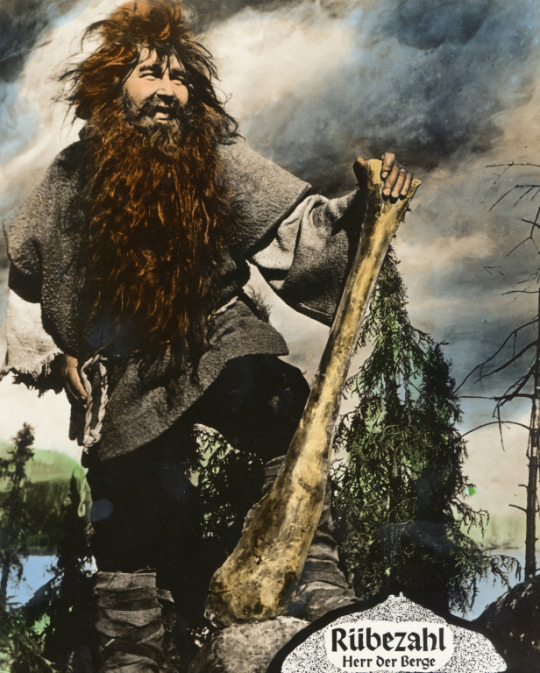
He is generally friendly to good people, teaches them remedies and gives gifts especially to the poor; but if he is mocked, he takes severe revenge, for example by bringing on storms. Sometimes hikers are led astray by him. He is said to have a garden of miraculous herbs, which he defends against intruders. Humble gifts from the mountain spirit, such as apples or leaves, can be turned into gold through his power, just as he can occasionally turn money paid to him into worthless currency.

The oldest records of the figure of Rübezahl are from the 16th century, but it is thought that the legend is at least a century older. At first he was just a local legendary figure who only later became known nationwide.

123 notes
·
View notes
Text
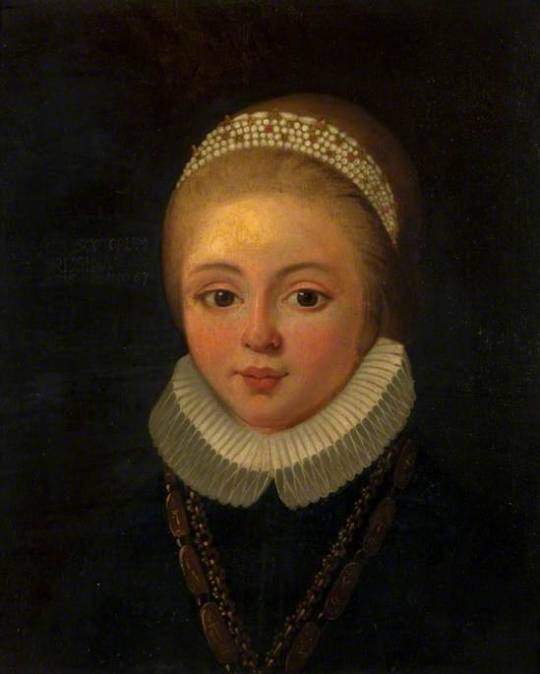
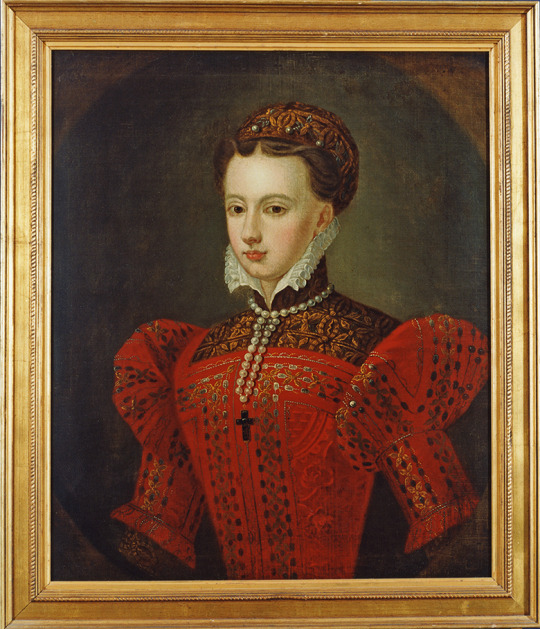
Mary, Queen of Scots, was born at Linlithgow Palace, on December 8th 1542.
Mary’s father was at his beloved palace of Falkland, where he would in fact die aged thirty on 6 days later, having learned of the birth of his baby daughter. The true cause of the death of James V has never been satisfactorily explained, although all sources agree that the king underwent a physical and nervous collapse as a result of his humiliation and devastation at the Battle of Solway Moss. However as I posted two weeks ago the King missed the battle and was perhaps suffering from a fever beforehand, in my opinion it is being used as a poor excuse for his death.
The room in which Mary was born is now little more than a romantic ruin without a roof, however its location in the north-west portion of Linlithgow Palace, still enjoys the view out over the loch as it did when Mary’s mother Queen Mary of Guise, gave birth to her here.
History would in fact come full circle, with Mary’s own granddaughter, Elizabeth of Bohemia, the so-called “Winter Queen”, residing also at Linlithgow in her time. The near-lying St. Michael’s Church is traditionally thought to have been the setting for Mary’s christening. Mary in fact only remained some months at Linlithgow, being taken onwards to the castle of Stirling by Mary of Guise. Historical doubt has arisen over the accuracy of December 8 as the actual birthday of Mary Queen of Scots and it has been suggested that the event in reality may have taken place on December 7th, but that December 8th was used so that the day could coincide with the feast of the Blessed Virgin Mary. Mary herself however always referred to December 8 thas the day she regarded as being her birthday.
Indeed one historical works about Mary's life gave this short account.....
"The nation partook in Mary of Guise' misfortunes, when she lost both her sons, soon after the birth of the second. She had the consolation, however of bringing her husband, while he was dying of an afflicted spirit, a daughter, on the 7th of December 1542, in the palace of Linlithgow."
The birth of Mary Queen of Scots is commemorated annually by a short private ceremony at Westminster Abbey on her birthday, 8 thDecember, together with the laying of flowers in the Queen’s memory. The Marie Stuart Society raised funds to enable a statue of the Queen to be erected on the Peel at Linlithgow Palace, the place of her birth and I have heard some of them gather there now to remember Queen Mary.
I also think it sad that our Queen was buried in Westminster, the traditional burial setting for many of England’s monarchs and the setting for each royal coronation since her own death. Although Mary had herself requested to be buried in France, this wish was not granted by Elizabeth I and she was initially interred with great solemnity at Peterborough Cathedral in late 1587, where her body remained at rest for twenty five years. It was the eventual wish of James VI/I, that her body be removed from Peterborough Cathedral to Westminster Abbey in 1612, ordering a spectacular marble canopy tomb to his mother’s memory by the sculptors Cornelius and William Cure, today to be found opposite the tomb of Elizabeth I, in the Abbey’s south aisle of the Lady Chapel. The tomb is loaded with symbolism particular to Mary’s ancestry and life with a crowned Scottish lion, bearing a magnificent Latin mourning inscription written by Henry, Earl of Northampton and containing two verses from the Gospel book of Peter. Close to her tomb is that of her mother-in-law, Margaret, Countess of Lennox.
However, the tomb of Mary Queen of Scots did not remain undisturbed following her reburial, nor was the peace of her final resting place unbroken. Mary would come to share her burial vault with many of her descendants, including her granddaughter Elizabeth of Bohemia, the unfortunate Arbella Stuart, Prince Rupert of the Rhine, the much lamented Henry Prince of Wales as well as ten infant children of James II and the eighteen babies of Queen Anne who died at birth. This search had been prompted by Dean Stanley in 1867, because the location of the coffin of Mary’s son James VI/I was at that time unknown. Logical thought led the searchers to assume that he may have been buried in the Stuart vault of his mother, although his lead coffin was eventually found in the vault of Henry VII, where he lay alongside the remains of his great-great-grandparents Henry VII and Queen Elizabeth of York.
So there you have it from her birth in 1542, to her death in 1587, I think I cover enough of her life throughout the year for you all to fill in the missing years, which as usual I will endeavour to do once more in the year 2020.
The pic is her portrait by the French artist François Clouet. she is thought to have been 16-18 years old at the time.
32 notes
·
View notes
Text
Vampire the Masquerade au wip
Brujah!Henry/Venture!Hans Wip
The morning sky was a mix of colors, a beautiful blend of pink and gold, as the sun began to climb the horizon.
The sun was about to rise. And oh how Hans missed the sun.
There were days when he wished he could walk out into its light. Feel the warmth on his skin to chase away the lonely chill of the night… When he was with Henry the chill and the darkness did not bother him, for as cliche as it sounded Henry was his sun. His light in the darkness, he could stand another hundred years of darkness if it meant Henry was by his side every night. A Venture and a Brujah worked as well as a Toreador and a Nosferatu. It was manageable as Henry was the second hand to the Prince’s sheriff, but like most good things in Hans’s life they didn’t last long.
Months of silent treatments, cruel digs to get under each other’s skin, fighting with words and fist all accumulated to the final straw that broke the camel’s back. It was no wonder Henry sought comfort in another, Theresa was a good woman much better then Hans, the Tremere kindred who was a good friend to Henry a shoulder to cry on when Hans pushed him away.
Hans shouldn’t have been angry, he should have been understanding, should have crawled on his knees and beg Henry to come back to him. Shouldn’t have thrown Henry out the door the second he saw him smelling of another, but Hans had been slighted and a slighted Venture was a dangerous Venture. Nearly stacking the Brujah on sight, but Henry had always been stronger, faster, better.
At the very least Hans should have left Bohemia, not Henry.
#kingdom come deliverance#kingdom come deliverance 2#hans capon#hansry#henry of skalitz#vampire the masquerade au
15 notes
·
View notes
Text
So, sometimes I just have to look something up because a question bugs me. And today's question was: what keeps Luxembourg a Grand Duchy? Because you just kind of wonder if there's some obscure feudal bylaw that keeps him from being a king or a prince (like the similar Monoco) or something, since the Netherlands and Belgium both have kings. And these oddities crop up all the time; like, there is a really convoluted fuedal thing happening in Andorra's government between Spain and France, and the Channel Islands have some hangovers from Norman rule.
So apparently the title of Grand Duke of Luxembourg was first held by Willem I, King of the Netherlands. It was a county from 963-1337, and elevated to a duchy in 1354 by Wenceslaus of Bohemia. And then Duchess Elisabeth sold Luxembourg to Philip III, Duke of Burgundy in 1441. Philip captured the city in 1443, but couldn't hold the dukedom because of not assume the ducal title because of conflicting claims by Anne of Austria, Ladislaus the Posthumous, William the Brave, Elizabeth II, Cashimir Jagiellon, and George of Podebrady. There's a lot of crazy bullshit that happened for like three centuries, because despite the small size of the region, a duchal title is no joke. In 1482, it became a Habsburg possession, because that's what happens if you're not vigilant with your European feudal title. They just spontaneously generate in the floorboards of palaces. Then Phillip V of France held the title due to the chaos of the War of Spanish Succession, it was kicked around a bit, and then Luxembourg was occupied by France from 1794 to 1813.
It was the 1815 Final Act of the Congress of Vienna that made it a grand duchy in personal union with William I of the Netherlands, of the House of Orange-Nassau, a title confirmed by the 1867 Treaty of London. What's key here is that the title of Grand Duke of Luxembourg was fossilized in the Nassau Family Pact, which is exactly what it sounds like: the competing princes of the House lf Nssau drew up an inheritance and succession plan in 1783 with agreements with the German Confederation, and they've stuck by it ever since. I can't think of any fallout from breaking it at this point now that neither Germany or France are monarchies, but it's cool that it's standing.
But the exact wording of the pact lead to issues, as the union with the Netherlands dissolved because William III's only heir was Wilhelmina, who ruined everything by not having a penis. Big yikes. The crown of the Netherlands passed to her despite her disability, but Luxembourg's duchal crown went to Adolphe, a dispossed Duke of Nassau. He was previously dispossessed over some stupid bullshit, but he had experience in duking and having a penis. Unfortunately, the new House of Nassau-Weilburg was quickly troubled by a lack of heirs. Adolphe's half-brother died with only a single son, Georg Nikolaus, Count von Merenberg; however, he was the product of a morganatic marriage, which means God didn't love him under European royal convention. Adolphe's eventually had one son, William IV, who encouraged a law allowing women to count as people if every man related to her is dead, five years before he put the law into practice. Grand Duchess Marie-Adélaïde abdicated in favor of her sister Charlotte in 1919, because she was childless and being a European royal seemed kind of cringe at the time. Since then, every sitting Grand Duke of the House of Nassau has abdicated in favor of their heir.

Marie-Adélaïde, Grand Duchess 1912-1919: "That fucking sucked."
16 notes
·
View notes
Text

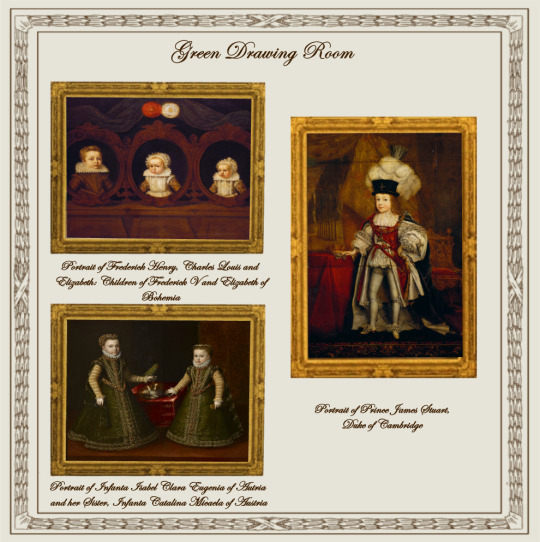
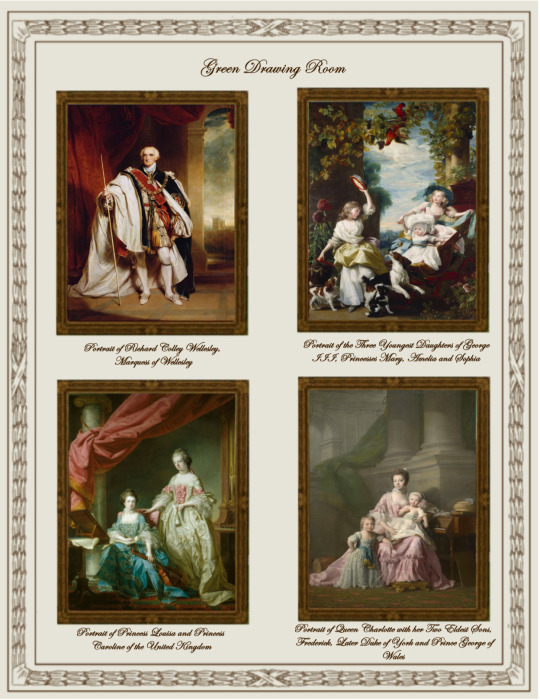
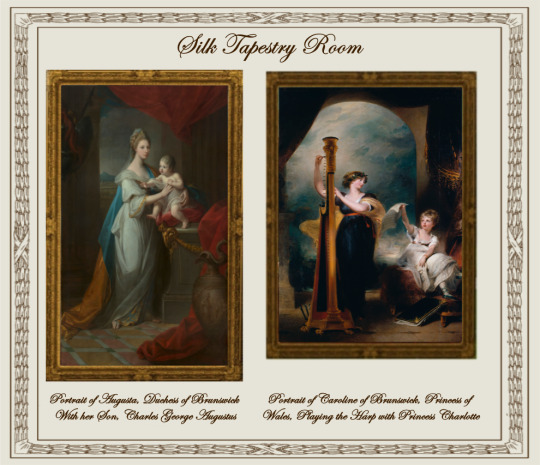
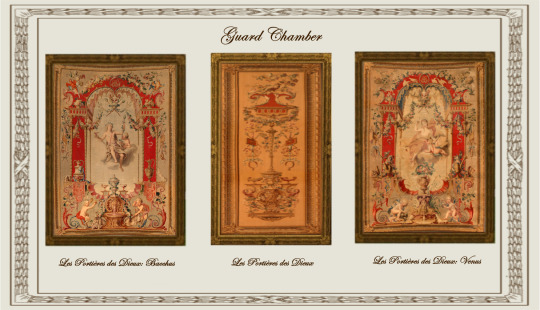

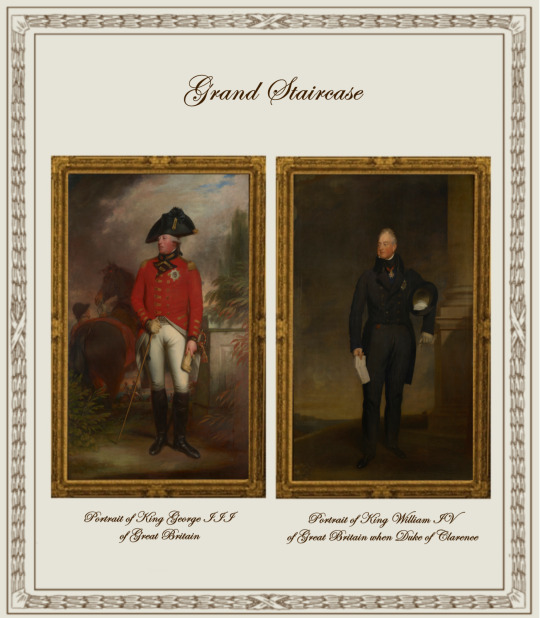
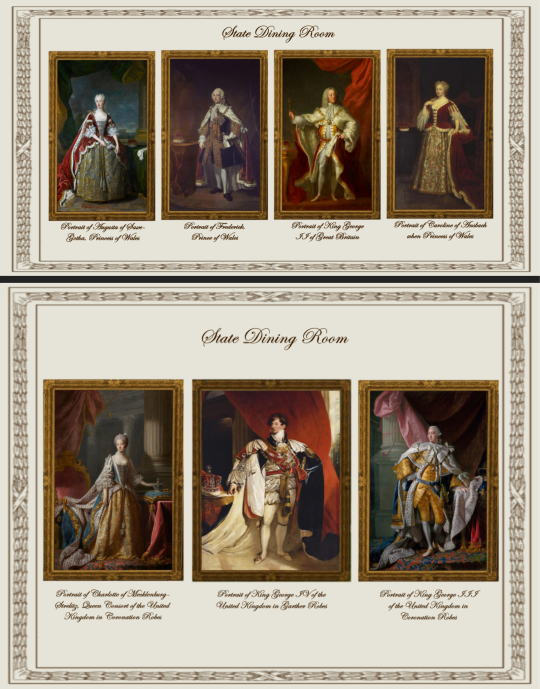
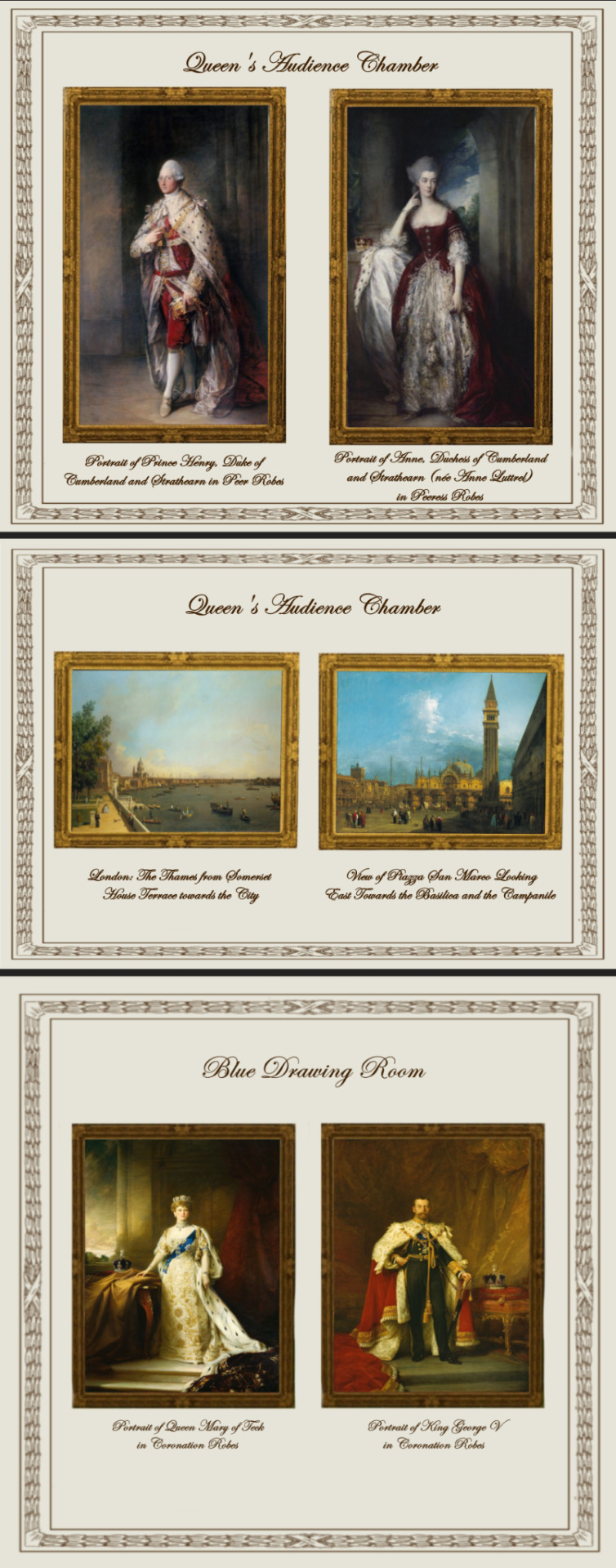
Paintings from Buckingham Palace: part I
A retexture by La Comtesse Zouboff — Original Mesh by @thejim07
100 followers gift!
First of all, I would like to thank you all for this amazing year! It's been a pleasure meeting you all and I'm beyond thankful for your support.
Spread among 13 occupied and historic royal residences in the United Kingdom, the collection is owned by King Charles III and overseen by the Royal Collection Trust. The British monarch owns some of the collection in right of the Crown and some as a private individual. It is made up of over one million objects, including 7,000 paintings, over 150,000 works on paper, this including 30,000 watercolours and drawings, and about 450,000 photographs, as well as around 700,000 works of art, including tapestries, furniture, ceramics, textiles, carriages, weapons, armour, jewellery, clocks, musical instruments, tableware, plants, manuscripts, books, and sculptures.
Some of the buildings which house the collection, such as Hampton Court Palace, are open to the public and not lived in by the Royal Family, whilst others, such as Windsor Castle, Kensington Palace and the most remarkable of them, Buckingham Palace are both residences and open to the public.
About 3,000 objects are on loan to museums throughout the world, and many others are lent on a temporary basis to exhibitions.
-------------------------------------------------------
This first part includes the paintings displayed in the White Drawing Room, the Green Drawing Room, the Silk Tapestry Room, the Guard Chamber, the Grand Staircase, the State Dining Room, the Queen's Audience Room and the Blue Drawing Room,
This set contains 37 paintings and tapestries with the original frame swatches, fully recolourable. They are:
White Drawing Room (WDR):
Portrait of François Salignan de la Mothe-Fénelon, Archbishop of Cambrai (Joseph Vivien)
Portrait of a Lady (Sir Peter Lely)
Portrait of a Man in Armour with a red scarf (Anthony van Dyck)
Portrait of Alexandra of Denmark, Queen Consort of the United Kingdom and Empress of India (François Flameng)
Green Drawing Room (GDR):
Portrait of Prince James Stuart, Duke of Cambridge (John Michael Wright)
Portrait of Frederick Henry, Charles Louis and Elizabeth: Children of Frederick V and Elizabeth of Bohemia (unknown)
Portrait of Infanta Isabel Clara Eugenia of Autria and her Sister, Infanta Catalina Micaela of Austria (Alonso Sanchez Coello)
Portrait of Princess Louisa and Princess Caroline of the United Kingdom (Francis Cotes)
Portrait of Queen Charlotte with her Two Eldest Sons, Frederick, Later Duke of York and Prince George of Wales (Allan Ramsay)
Portrait of Richard Colley Wellesley, Marquess of Wellesley (Martin Archer Shee)
Portrait of the Three Youngest Daughters of George III, Princesses Mary, Amelia and Sophia (John Singleton Copley)
Silk Tapestry Room (STR):
Portrait of Caroline of Brunswick, Princess of Wales, Playing the Harp with Princess Charlotte (Sir Thomas Lawrence)
Portrait of Augusta, Duchess of Brunswick With her Son, Charles George Augustus (Angelica Kauffmann)
Guard Chamber (GC):
Les Portières des Dieux: Bacchus (Manufacture Royale des Gobelins)
Les Portières des Dieux: Venus (Manufacture Royale des Gobelins)
Les Portières des Dieux (Manufacture Royale des Gobelins)
Grand Staircarse (GS):
Portrait of Adelaide of Saxe-Meiningen, Queen Consort of Great Britain (Martin Archer Shee)
Portrait of Augustus, Duke of Sussex (Sir David Wilkie)
Portrait of Edward, Duke of Kent (George Dawe)
Portrait of King George III of Great Britain (Sir William Beechey)
Portrait of King William IV of Great Britain when Duke of Clarence (Sir Thomas Lawrence)
Portrait of Leopold I, King of the Belgians (William Corden the Younger)
Portrait of Prince George of Cumberland, Later King George V of Hanover When a Boy (Sir Thomas Lawrence)
Portrait of Princess Charlotte Augusta of Wales (George Dawe)
Portrait of Queen Charlotte at Frogmore House (Sir William Beechey)
Portrait of Victoria of Saxe-Coburg-Saafeld, Duchess of Kent (Sir George Hayter)
State Dining Room (SDR):
Portrait of Charlotte of Mecklenburg-Strelitz, Queen Consort of the United Kingdom in Coronation Robes (Allan Ramsay)
Portrait of King George III of the United Kingdom in Coronation Robes (Allan Ramsay)
Portrait of Augusta of Saxe-Gotha, Princess of Wales (Jean-Baptiste Van Loo)
Portrait of Caroline of Ansbach when Princess of Wales (Sir Godfrey Kneller)
Portrait of Frederick, Princes of Wales (Jean-Baptiste Van Loo)
Portrait of King George II of Great Britain (John Shackleton)
Portrait of King George IV of the United Kingdom in Garther Robes (Sir Thomas Lawrence)
Queen's Audience Room (QAR):
Portrait of Anne, Duchess of Cumberland and Strathearn (née Anne Luttrel) in Peeress Robes (Sir Thomas Gainsborough)
Portrait of Prince Henry, Duke of Cumberland and Strathearn in Peer Robes (Sir Thomas Gainsborough)
London: The Thames from Somerset House Terrace towards the City (Giovanni Antonio Canal "Canaletto")
View of Piazza San Marco Looking East Towards the Basilica and the Campanile (Giovanni Antonio Canal "Canaletto")
Blue Drawing Room (BDR)
Portrait of King George V in Coronation Robes (Sir Samuel Luke Fildes)
Portrait of Queen Mary of Teck in Coronation Robes (Sir William Samuel Henry Llewellyn)
-------------------------------------------------------
Found under decor > paintings for:
500§ (WDR: 1,2 & 3)
1850§ (GDR: 1)
1960§ (GDR: 2 & 3 |QAR 3 & 4)
3040§ (STR, 1 |GC: 1 & 2|SDR: 1 & 2)
3050§ (GC:1 |GS: all 10|WDR: 4 |SDR: 3,4,5 & 6)
3560§ (QAR: 1 & 2|STR: 2)
3900§ (SDR: 7| BDR: 1 & 2|GDR: 4,5,6 & 7)
Retextured from:
"Saint Mary Magdalene" (WDR: 1,2 & 3) found here .
"The virgin of the Rosary" (GDR: 1) found here .
"The Four Cardinal Virtues" (GDR: 2&3|QAR 3 & 4) found here.
"Mariana of Austria in Prayer" (STR, 1, GC: 1 & 2|SDR: 1 & 2) found here.
"Portrait of Philip IV with a lion at his feet" (GC:1 |GS: all 10|WDR: 4 |SDR: 3,4,5 & 6) found here
"Length Portrait of Mrs.D" (QAR: 1 & 2|STR: 2) found here
"Portrait of Maria Theresa of Austria and her Son, le Grand Dauphin" (SDR: 7| BDR: 1 & 2|GDR: 4,5,6 & 7) found here
(you can just search for "Buckingham Palace" using the catalog search mod to find the entire set much easier!)
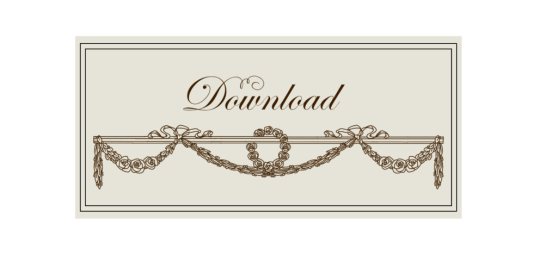
Drive
(Sims3pack | Package)
(Useful tags below)
@joojconverts @ts3history @ts3historicalccfinds @deniisu-sims @katsujiiccfinds @gifappels-stuff
-------------------------------------------------------
#the sims 3#ts3#s3cc#sims 3#sims 3 cc#sims 3 download#sims 3 decor#edwardian#rococo#baroque#renaissance#buckingham#buckingham palace#royal collection trust#wall decor
147 notes
·
View notes
Text


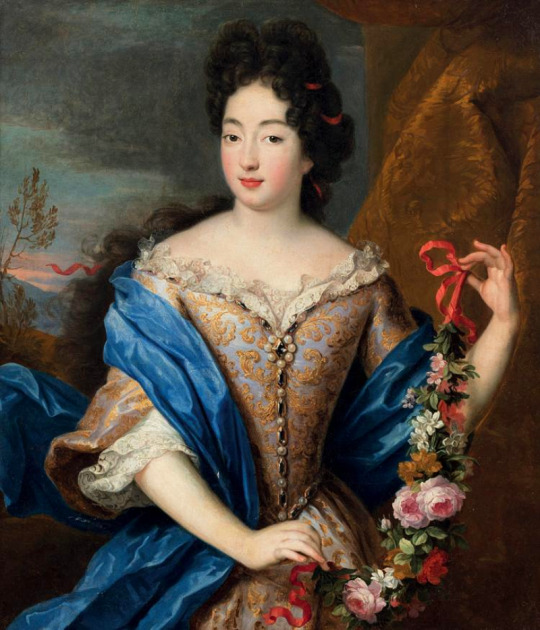


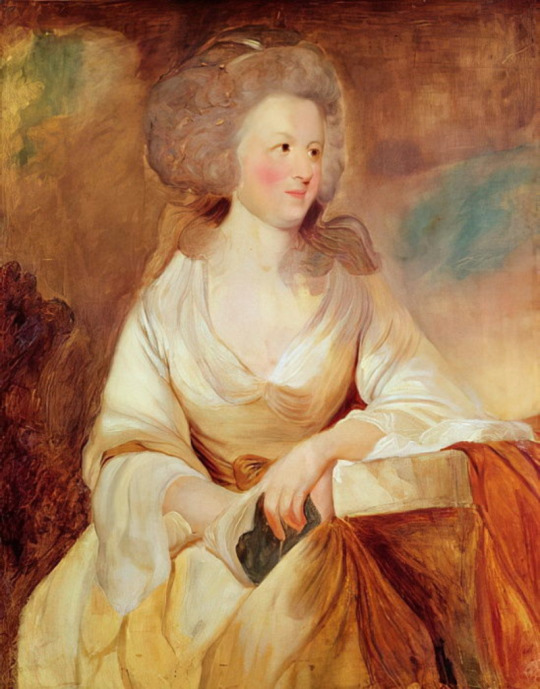

Royal Birthdays for today, March 13th:
Judith of Habsburg, Queen of Bohemia, 1271
Louis I, Duke of Orléans, 1372
Anne of Bavaria, Princess Palatine, 1648
Philippine Charlotte of Prussia, Duchess of Brunswick-Wolfenbüttel, 1716
Joseph II, Holy Roman Emperor, 1741
Louise Marie Adélaïde de Bourbon-Penthièvre, Duchess of Orléans, 1753
George Mikhailovich, Prince of Prussia, 1981
#louis i#anne of bavaria#joseph ii#Louise Marie Adélaïde de Bourbon-Penthièvre#George Mikhailovich#Philippine Charlotte of Prussia#Judith of Habsburg#long live the queue#royal birthdays
13 notes
·
View notes
Text

Portrait of Emperor Franz I of Austria
Artist: Leopold Kupelwieser (Austrian, 1796–1862)
Date: About 1830
Medium: Oil on Canvas
Collection: Military History Museum, Vienna, Austria
Emperor Franz I of Austria
Franz Joseph Karl (12 February 1768 in Florence; 2 March 1835 in Vienna) from the House of Habsburg-Lorraine was the last Emperor of the Holy Roman Empire from 1792 to 1806 as Franz II. In 1804 he founded the Austrian Empire, which he ruled as Franz I until his death.
In order to counter the hegemony of the French Emperor Napoleon Bonaparte in Central Europe and to prevent a loss of status, he assumed the title of hereditary Emperor of Austria in 1804 , but continued to use the title of Elected Roman Emperor, at all times Increaser of the Empire , until 1806. In literature he is therefore often called Francis II/I, to distinguish him from his grandfather Francis I Stephen .
His declaration of abdication on 6 August 1806, in which he laid down "the German imperial crown and the imperial government" and released "the electors, princes and other estates, as well as all members and the imperial servants, from their previous duties", was motivated by the fear that the imperial crown could fall into French hands and that his Austrian lands in the empire could de jure come under Napoleonic rule. In fact, the empire - already only a very loose union - was broken up by the Confederation of the Rhine , founded in 1806 at Napoleon's instigation, whose princes left the empire. The abdication of the imperial crown is therefore considered confirmation of the dissolution of the empire, even if it did not constitute a corresponding legal act.
Until his death in 1835, Emperor Franz also remained King of Bohemia , Croatia and Hungary. His power base remained the Habsburg hereditary lands.
#portrait#holy roman emperor#franz ii#austrian empire#emperor franz I#austrian emperor#full length#standing#king of bohemia#king of croatia#king of hungary#leopold kupelwieser#austrian painter#19th century painting#royal robes#royal crown#spectre#royal chair#drapery
18 notes
·
View notes
Text
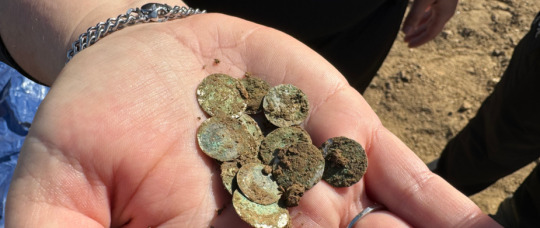
Woman Discovers Over 2,150 Silver Coins From Middle Ages in Czech Republic
Historians have started the process of putting these ancient coins through X-rays to determine what material they are made from.
A woman, out for a walk, was in for a surprise when she stumbled upon a buried treasure from the Middle Ages -- more than 2,150 silver coins -- in the Kutna Hora town of the central Bohemian region in the Czech Republic.
Described by experts as a "once-in-a-decade discovery", these silver coins were minted between 1085 and 1107, according to a press release translated into English by the Institute of Archaeology of the Czech Academy of Sciences (ARUP).
Experts believe these coins were manufactured in Prague and were imported to Bohemia.
ARUP explained that the coins were made of "coin alloy, which, in addition to silver, also contains an admixture of copper, lead and trace metals”.
Once the experts determine the composition used in making these coins, they will also be able to tell the origins of the silver used, it added.
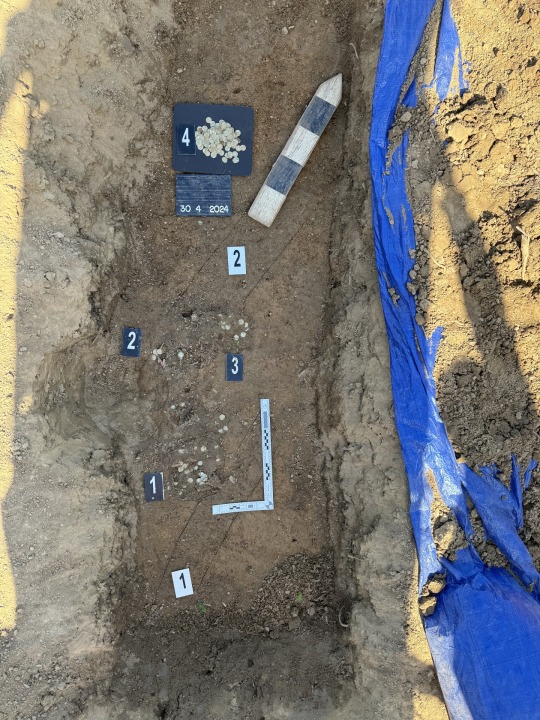

Political instability
The treasure was hidden when the region witnessed political instability, archaeologist Filip Velimsky said.
These coins were stored in a ceramic container that was destroyed over time. However, the archaeologists did manage to discover the bottom of the container.
Recalling history, Velimsky asserted that back then there were disputes in the country "between the members of the Přemysl dynasty about the princely throne of Prague."
Noting that battles were common during the period, ARUP, in its release, claimed that the depot could have been cash “for paying wages or spoils of war.”
The value of these ancient coins was “unimaginable” during the time, the historian said.
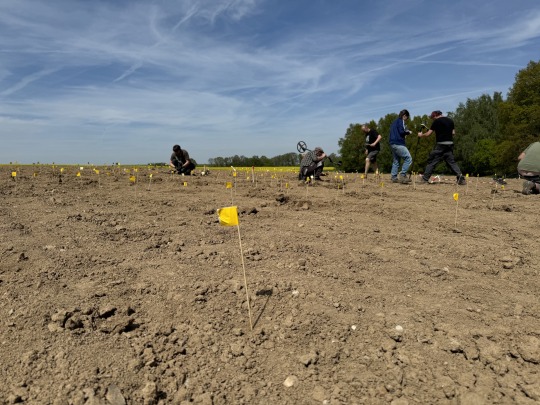

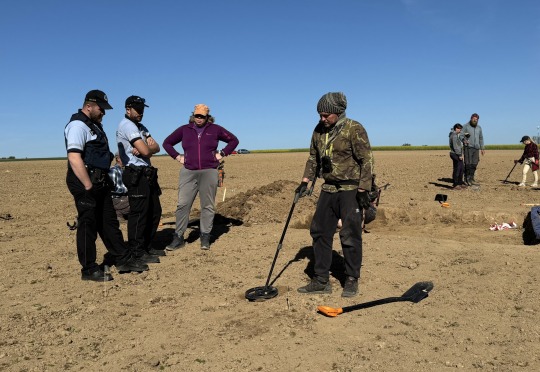
“Unfortunately, for the turn of the 11th–12th century, we lack data on the purchasing power of contemporary coins… But it was a huge, unimaginable – and at the same time, unavailable – amount for an ordinary person. It can be compared to winning a million in the jackpot," Velimsky explained.
Officials in the country have called the discovery “one of the largest finds of the last decade.”
What next?
For now, historians have started to process the coins. This includes putting them through X-rays to determine what material these coins are made from.
There are plans to put these coins up for display during an exhibition next year.
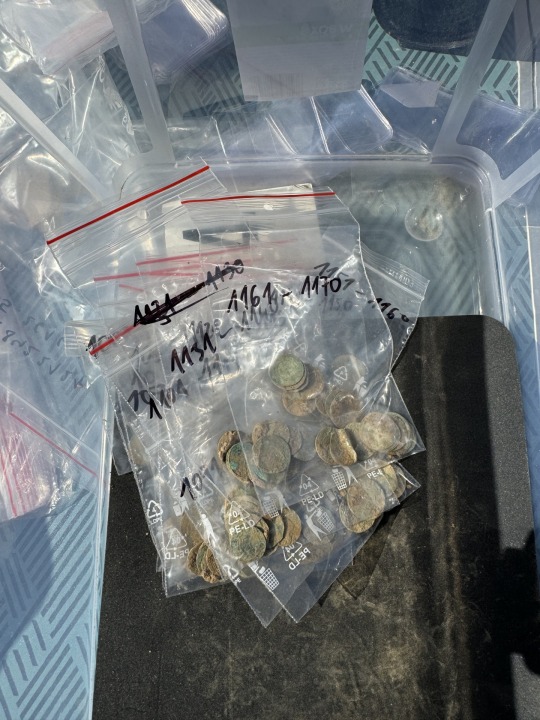
#Woman Discovers Over 2150 Silver Coins From Middle Ages in Czech Republic#silver#silver coins#collectable coins#metal detector#ancient artifacts#archeology#archeolgst#history#history news#ancient history#ancient culture#ancient civilizations#middle ages
39 notes
·
View notes
Photo
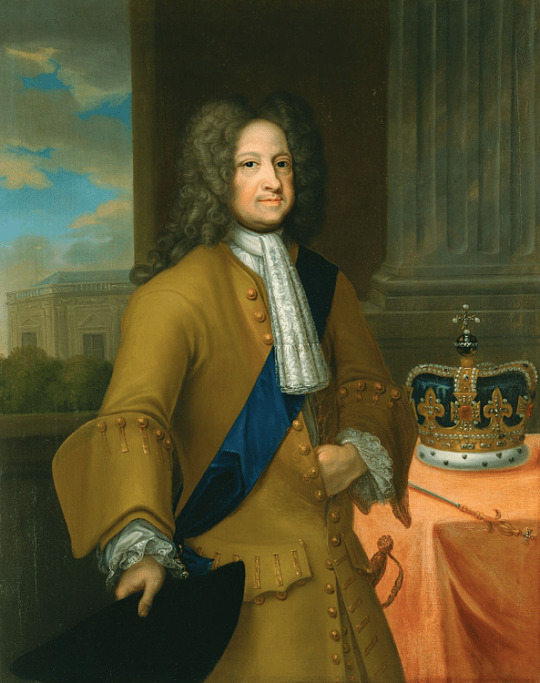
George I of Great Britain
George I of Great Britain (r. 1714-1727) succeeded the last of the Stuart monarchs, Queen Anne of Great Britain (r. 1702-1714) because he was Anne's nearest Protestant relative. The House of Hanover secured its position as the new ruling family by defeating several Jacobite rebellions which supported the old Stuart line.
King George may have struggled with both English and the English, often preferring his attachments in Germany, but his reign was a relatively stable one. His greatest legacy was as a patron of the arts, in particular, his support of musicians like Handel and such lasting cultural institutions as the Royal Academy of Music. He was succeeded by his son George II of Great Britain (r. 1727-1760).
Succession: The House of Hanover
The Glorious Revolution of 1688 saw the end of the reign of the male Stuarts and placed William, Prince of Orange on the throne as William III of England (r. 1689-1702) with his wife, the daughter of the exiled James II of England (r. 1685-1688), made Mary II of England (r. 1689-1694). Mary's sister became the ruling monarch in 1702 as Anne, Queen of Great Britain. When Anne died, so ended the Stuart royal line, which had begun with Robert II of Scotland (r. 1371-1390).
Queen Anne outlived her husband Prince George of Denmark (1653-1708) by six years; she died at the age of 49 on 1 August 1714 at Kensington Palace after suffering two strokes. Queen Anne had had many children, but all died in infancy. The greatest hope for an heir had been William, Duke of Gloucester (b. 1689), but he died in 1700, aged 12. Anne's official heirs, the Hanoverian family, were selected as such in the 1701 Act of Settlement.
The Hanovers were connected to the British royal line as descendants of Elizabeth Stuart (d. 1662), daughter of James I of England (r. 1603-1625) and brief Queen of Bohemia through her husband Frederick V of the Palatinate. The chosen successor – although she was not permitted by Anne to even visit England – was Elizabeth Stuart's daughter Sophia (l. 1630-1714), wife of the Duke of Brunswick and Elector of Hanover (a small principality in Germany the size of Yorkshire). Sophie of Hanover was Queen Anne's nearest relation of the Protestant faith, a vital consideration given that Parliament had already passed a law forbidding a Catholic to take the throne. For this reason, more than 50 other claimants to the throne had been deemed unsuitable. When Sophia died in 1714, her son, George Ludwig, took over the role of heir apparent to the British throne.
Continue reading...
28 notes
·
View notes
Text
thoughts about this week's episode (spoilers ahead)
from relistening to last episode: i like Mariana more and more as time goes on. i like that they explain cases to her and she has ideas or analyses of them. i like that she's understanding and competent and pretty sharp. this is truly an OC with no equivalent in the originals, but she works!!
from this episode:
companion/colleague/friend/flatmate!! so true John tell us more about this relationship
saw someone refer to John as a "cringefail podcaster boyfriend" and yeah... maybe I am beginning to like him more. i can see it!
"don't be silly! you're a handsome prince!" "i'm in tights." "hmm, [laughing] yes."
there will be fanart of the robot-and-prince scene by tomorrow i'm manifesting it please?
their costumes probably blended in perfectly with the overall production vibes of Solar Thunder
for the first time in this podcast, I could figure out the solution to the mystery before the 2/3rds mark. the whole con was an effort to get him out of the house for 9+ hours per day!
john's a coward for editing out the first half of the opera. should have been a 2 hour episode (1.5 hours opera, 0.5 hours podcast)
i assume that Sherlock is completely zoned into the opera
very very excited to hear that the opera is called Bohemia and stars one Irene Adler -- I have a feeling they'll be revisiting it soon
i adore Sherlock's fucking "talking to whatsherface at the opera intermission" voice (and John's "what... on Earth?")... and then 5 mins into the conversation he's back to normal
Sherlock and gun safety don't exactly mix, do they. "I'm a normal human being, I don't wander around with a gun!" "Well I do :)"
IT'S A THREE PARTER????? it's a three part story sldkfjdslkfjd FUCK SHIT THIS IS SO SAD
23 notes
·
View notes
Text
I was tagged in this meme by @themalhambird a month ago...
Below are some fics getting a lot of thought, but minimal writing. Send me an ask with one that interests you and I'll write you a bit of it (100 words minimum).
righteousness. Hal, Courtenay, asexuality and the priesthood. (same verse as this)
In White. Henry has returned home and everything is both the same and completely different. The fifth instalment of the baby Lancasterling series.
her own blancheur. An attempt to deal with the historical Blanche of England's story by setting it in the modern day.
shadows and screams in our blood. Philippa of England, blood and leaving home.
shall not the water remember. Not long after her arrival in England, Catherine finds her new husband returning night after night to the chapel of St. Edward.
an open wound still bleeds. Edward of York visits the wounded Prince of Wales at Kenilworth Castle. Sad Edward Fic I first proposed writing a year ago.
queen's gold. Anne of Bohemia visits the Archbishop of Canterbury to apologise for trying to claim the queen's gold fee from him and gets to meet his adorable baby nephew. Fic version of this.
Tagging, with no pressure, @shredsandpatches @skeleton-richard @maplelantern @bending-sickle @tollers-and-jack @oldshrewsburyian
#ask me stuff#this is not including the smut fic rotating in my mind...#maybe i should a separate post for those fics...
4 notes
·
View notes